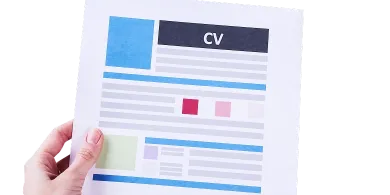Table of contents
A great nursing assistant resume shows you’re skilled, up to date, and ready to make a difference. This guide will assist you in crafting a concise, contemporary resume that captures attention and secures interviews.

The healthcare world isn’t what it used to be. Over the last few years, hospitals and clinics have changed how they work, how they hire, and what they expect from nurses. Today, a resume that only lists your degree and past jobs won’t help you stand out. You need to show you’re ready for what nursing looks like right now, and where it’s headed.
According to the U.S. Bureau of Labor Statistics, nursing jobs are growing steadily. Between 2023 and 2033, registered nurse positions are expected to increase by 6%, which is faster than many other careers. That’s about 194,500 new openings each year. You can see the latest numbers here: BLS Nursing Statistics.
The skills employers are looking for have also shifted. Nurses now need to be comfortable with telehealth, digital records, and sometimes even AI tools. Whether you’re a licensed practical nurse or an RN, being able to guide patients over video calls or track their progress online is a big advantage.
Gerontology, the care of older adults, is also in higher demand. As America’s population ages, more facilities are hiring nurses who understand the unique needs of seniors. Highlighting experience in this nursing specialty can set you apart. You can also explore certifications from the American Nurses Credentialing Center to strengthen your qualifications and show your commitment to professional growth.
A recent survey by FutureCare indicated that experienced nurses who know how to use telehealth systems and electronic health records are getting hired faster than those who don’t.
Corné MacKenzie, a nurse resume writer here at ResumeWritingLab, put it simply: “Nursing assistant resumes must now demonstrate not only clinical competence but also adaptability to emerging technologies.”
In other words, your resume needs to prove that you’re not just a great caregiver; you’re also ready to handle the tools and systems that modern healthcare depends on.
If you’re figuring out how to write a resume for nursing assistant job or any nursing role, start with the basics – your contact information. It’s the first thing employers see, so you want it to look clean and professional.
Think of this section as your handshake on paper. It tells hiring managers who you are and how to reach you without any confusion.

Here’s exactly what you should include:
Use your complete name, no nicknames. If your name is common, adding a middle initial helps avoid mix-ups.
Always list a number you check regularly. Before you send out your resume, call yourself to make sure your voicemail is set up and sounds professional.
Choose an email that uses your real name. Skip anything that sounds casual or outdated. For example:
Good: [email protected]
Avoid: [email protected]
These days, most recruiters look you up online. Add your LinkedIn link so they can easily learn more about your practical and technical skills. Please ensure that your profile aligns with your resume.
If you have credentials, like RN, BSN, or CNA, you can list them right after your name to show your qualifications at a glance.
Sample Header:
Quick Tip: Keep it simple. A professional email and an up-to-date phone number go a long way. Our team thinks that clear contact info makes you look reliable and organized, qualities every employer values.
Job seekers should think of this part as their short elevator pitch. A hiring manager will read a resume summary or nursing assistant resume objective first, so it should be concise and impactful.
A professional summary shares who you are and your unique skills, what you’ve done, and what you want to do next. This is especially helpful if you’re learning how to write a resume for a nursing assistant job and want to stand out quickly.
According to a survey by Glassdoor, nearly 63% of hiring managers prefer a short summary over an old-school objective statement.
Keep it simple:
Example: “Certified Nursing Assistant with 4 years of experience supporting patients in long-term care settings. My skills include monitoring vital signs, reminding patients to take their medications, and maintaining accurate records. Dedicated to delivering compassionate care and improving residents’ quality of life.”
Employers need to see that your licenses and certifications are current. This part of your resume is not the place to be vague.
What to include:
Pro tip: Adding expiration dates shows you’re organized and keep your credentials up to date.
Example:
| Certification | Issuing Body | Expiration Date |
| CNA License | Texas Department of Health | 10/2025 |
| BLS | American Heart Association | 07/2026 |
| CPR Certification | Red Cross | 05/2025 |
If you’re unsure about your state requirements, you can check with the NCSBN.
This section is where you show exactly what you’ve done and why you’re good at your nursing career. List your jobs starting with your most recent role.
Include:
Use action words to start each bullet, and try to include numbers that prove your impact.
Action words to try:
Example Bullet Points:
“When you can show clear results, like reduced errors or better patient satisfaction, it makes your resume stand out,” says Sarah Lin, Nurse Recruiter at Providence Health.
Your education section should be simple and clear.
What to include:
Example:
Nursing jobs need both hands on hard and soft skills. Make sure you show both in this section.
Tip: If you’re not sure what to list, check the job description and pull keywords straight from it.
Skills Table Example:
| Hard Skills | Soft Skills |
| Electronic Health Records | Communication |
| Vital Signs Monitoring | Empathy |
| Wound Care | Teamwork |
| IV Assistance | Problem-Solving |
| Telehealth Platforms | Patience |
Adding screenshots or simple icons can help break up the text. For example:
If you’re committed to securing interviews, please create a resume for each hospital or clinic. Hiring managers can spot a cookie-cutter resume in seconds.
If you’re wondering how to write associate’s degree in nursing on resume, or how to highlight your nursing education, customizing is a perfect place to start. Use the same language the employer uses when describing degrees and credentials. For example, if the posting says Associate’s Degree in Nursing (ADN), use that exact phrase instead of abbreviations like ASN.

When you’re trying to understand how to write a resume for a nursing assistant job, you don’t need fancy graphics or complicated layouts. Clean and professional always wins in the best nursing assistant resumes.
Keep your resume between one and two pages.
Use clear section headings like Professional Summary, Work Experience, and Education.
Fonts: Stick to clean options (Arial, Calibri, or Times New Roman). They look professional and are easy on the eyes.
Font Sizes:
Margins:
Even a strong resume can get skipped if you make these common mistakes.
Remember: recruiters only spend about 7 seconds on the first scan of your resume, so everything needs to be clear and relevant.
Here are pitfalls to watch out for:
“Recruiters spend an average of 7 seconds on an initial resume scan, so clarity and relevance are essential,” says Logan Call, Senior Healthcare Resume Writer here at RWL.
Keep learning. Nursing evolves fast, and employers love seeing fresh certifications like ACLS or specialty training. They show you’re serious about your practical experience.
Before sending your resume, check every detail. Typos can ruin a great first impression.
Proofread it yourself, then ask a colleague you trust to look it over. A polished resume combined with ongoing learning proves you’re ready for the job.